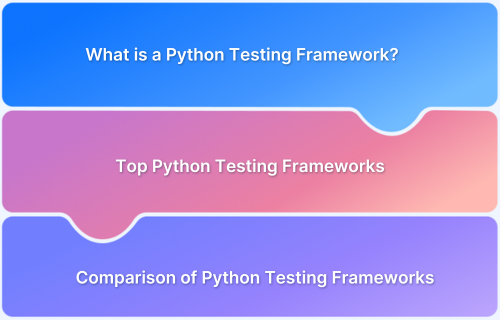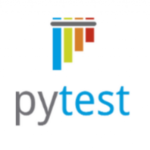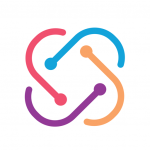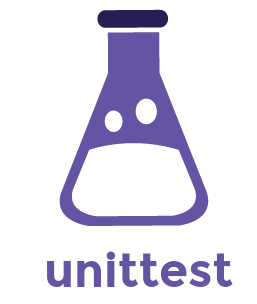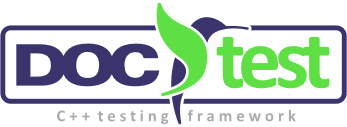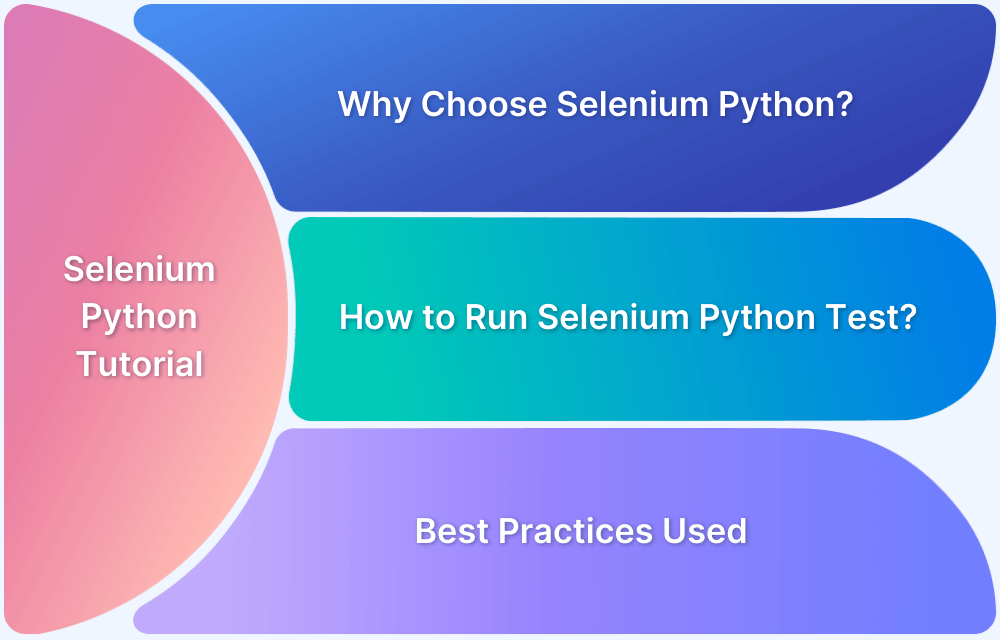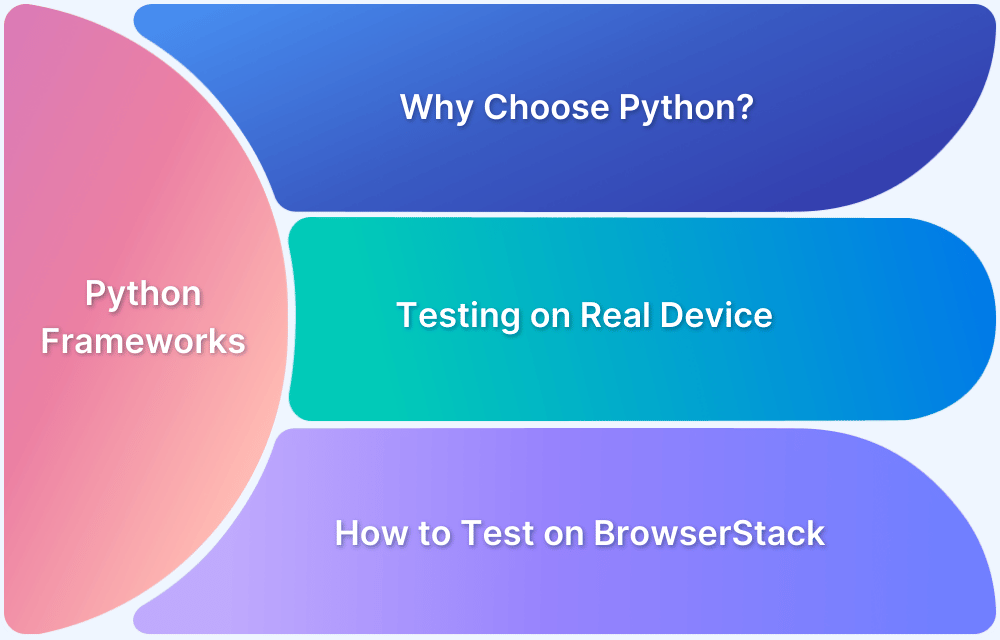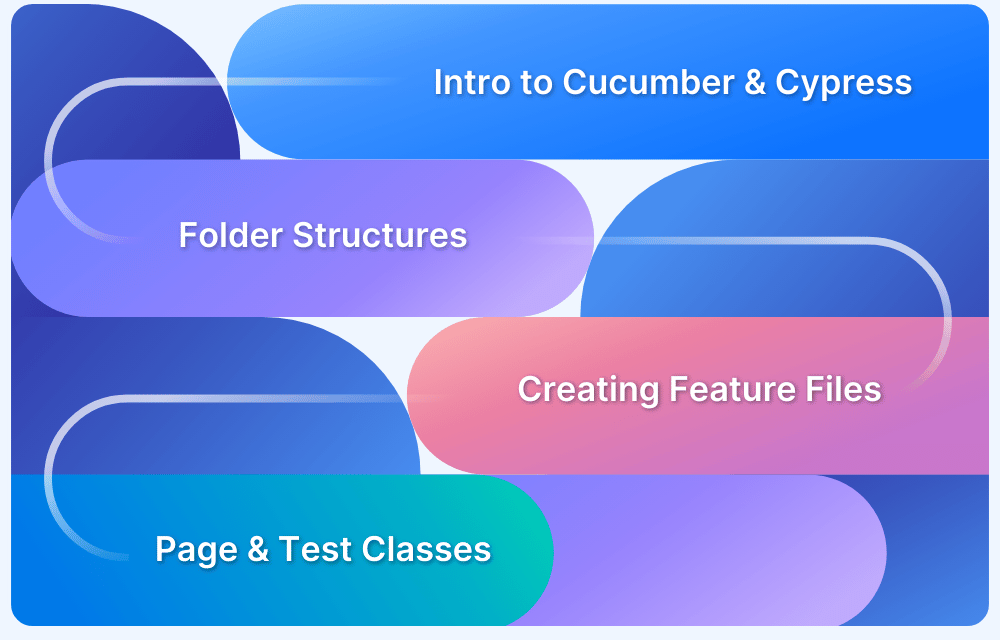Python is one of the most widely used programming languages. It is known for its versatility in web development, automation, and data science. Its simplicity and readability make it ideal for writing test cases, leading to the growing demand for efficient testing frameworks.
This article highlights the top 10 Python testing frameworks that provide reliable and comprehensive automation, ensuring efficient software testing and quality assurance.
What is a Python Testing Framework?
Python testing framework is a dynamic framework based on Python, which is well known for its ease of use in web development and test automation. These transitions over time also result in the need for excellent testing tools. There are several frameworks and libraries in Python that support automated testing.
Must Read: Top 10 Python Web Development Frameworks
Top 15 Python Testing Frameworks
Here’s a list of top Python Testing Frameworks:
Python Testing Frameworks:
- Behave Framework
- Lettuce Framework
- Robot Framework
- Pytest Framework
- TestProject Framework
- PyUnit (Unittest) Framework
- Testify Framework
- Doctest Framework
- Locust
- Splinter
- Ward
- pytest-benchmark
- Tox
- Nose2
- Slash
Below is a detailed explanation of each of these testing frameworks. Understanding their benefits and limitations will help you decide when to use them.
1. Behave Framework
Behave is one of the most widely used Python test frameworks, known for being especially useful when it comes to behavior-driven development (BDD). This framework is quite similar to Cucumber.
All test scripts are written in a simple language and then attached to the code during execution. Code behavior is determined by relevant specs. Behave allows once-defined steps to be reused by other use case scenarios.
Prerequisites for Behave:
Behave can be used by anyone who possesses basic knowledge of Python. Before installing Behave, do the following:
- Install any version of Python over 2.7.14
- Install a Python package manager or pip
- Install Pycharm or a similar IDE.
Key Benefits of Behave:
- In Behave, system behavior is defined by semi-formal language and involves the use of a domain vocabulary that ensures behavior remains constant in the organization.
- There are building blocks available for the execution of a large variety of test cases.
- Facilitates effective coordination of development teams’ work on diverse modules with some similar features.
- All specs are in a similar format, offering managers better clarity on the output of developers and QAs.
Disadvantages of Behave:
- Works optimally only for black-box testing.
- Not the best fit for a unit or integration testing, as the verbosity inherent in these tests, can lead to complications in test scenarios.
BrowserStack provides integration with Behave to facilitate simpler test automation using Python & Selenium. To know more, view the documentation for running Selenium tests using Behave with Browserstack.
2. Lettuce Framework
Lettuce is also extremely effective when it comes to automating behavior-driven test structures. Its functioning is based on Cucumber and Python. Primarily, Lettuce is good for making the common tasks of a BDD structure easier to accomplish.
Prerequisites for Lettuce:
Before installing Lettuce, do the following:
- Install Python 2.7.14 or above
- Install Pycharm or an equally capable IDE
- Install the Python package manager
Key Benefits of Lettuce:
- Enables developers to program more than one scenario and describe its characteristics in a simple, natural language
- Enables, much like Behave, productive coordination due to specs being defined in a similar format
Disadvantages of Lettuce:
- Lettuce requires a highly refined system of communication between QAs, developers, and stakeholders in order to be truly functional as a Python testing framework. There is no room for ambiguity here.
As is the case with Behave, BrowserStack provides integration with Lettuce to facilitate simpler test automation using Python. View the relevant documentation here to learn more about automated testing with Lettuce and Python.
3. Robot Framework
This framework is largely suitable for acceptance testing. While it has been developed with Python, it is also capable of running on IronPython (.net based) as well as Jython (Java-based). The Robot Framework is compatible with Windows, macOS, or Linux.
Prerequisites for Robot Framework:
Before installing Robot Framework, do the following:
- Install Python 2.7.14 or above
- Install the Python package manager (pip)
- Download a development framework such as the Pycharm Community Edition
Key Benefits of Robot Framework:
- RF is based on keyword-driven testing, it makes automation simpler by helping testers easily create readable test cases
- Enables easy usage of test data syntax
- Supports all operating systems (macOS, Windows, Linux) and all application types such as web and mobile apps.
- Easy-to-understand report data
- Its many APIs and rich ecosystem make it highly extensible and easy to integrate with third-party tools.
- It is equipped with numerous generic tools and test libraries, each of which can be individually used in separate projects.
- Good community support.
Disadvantages of Robot Framework:
- There is no default parallel test support. However, you can achieve this with Selenium Grid.
- While it is largely convenient to use, some complications may arise when creating customized HTML reports. However, it does allow for the presentation of xUnit formatted short reports.
- Requires a bit longer learning curve for beginners who need to learn to work within the RF’s predefined methodology.
- Creating generic keywords takes longer than writing coded tests.
- Report customization is quite difficult.
4. Pytest Framework
Pytest is one of the most popularly used Python testing frameworks. It is an open-source testing framework. Pytest supports unit testing, functional testing, and API tests.
Prerequisites for Pytest Framework:
- Install Python version 3.5 or above.
Key Benefits of Pytest Framework:
- Provides a compact and simple test suite.
- Highly extensible with many plugins available, such as the Pytest HTML plugin, which can be added to your project to print HTML reports with a single command-line option.
- It has large community support.
- It helps to cover all parameter combinations without rewriting test cases.
Disadvantages of Pytest Framework:
Pytest’s proprietary routines prevent compatibility. This means that though the test cases can be easily written in this framework, you won’t be able to use those in other testing frameworks.
Must Read: Pytest vs Unittest: A Comparison
5. TestProject Framework
TestProject is an open-source automation framework. It provides cloud and local HTML reports and easy test automation development. Supports the Pytest and Unittest frameworks and all required dependencies as part of a single executable cross-platform agent file.
Prerequisites for TestProject Framework:
- Install Python version 3.6 or above.
Key Benefits of TestProject Framework:
- Free automated reports in HTML/PDF format
- Easy access to execution history via RESTful API
- Always updated with the latest Selenium/Appium driver version
- Provides a single SDK for Android, iOS, web, and general testing
- Integrated test reporting capabilities
- Cross-platform support for all operating systems
- Extensive community and support.
Disadvantages of TestProject Framework:
- Requires support for parallel testing as only one test runs at a time.
- Team collaboration tools are limited in offline mode, and tests must be stored on a shared network drive/git when working in the field.
6. PyUnit (Unittest) Framework
PyUnit (also known as Unittest) is a JUnit-inspired unit testing framework. This is the default Python testing framework that comes with the Python package by default. Therefore, most developers start testing with this.
Key Benefits of PyUnit Framework:
- It doesn’t require the installation of additional modules as it is part of the standard Python library.
- Provides simple, clean and quick test case execution.
- Fast generation of test reports, including XML and Unittest SML reports.
Disadvantages of Unittest Framework:
- Test code supports abstractions that can obscure intent and make it difficult to interpret.
- Requires a lot of ‘boilerplate’ code.
- Uses camelCase naming convention.
7. Testify Framework
Testify is a unit testing framework that is also used for integration and system testing. It aims to replace the popular Unittest and Nose frameworks and add advanced additions to them.
Key Benefits of Testify Framework:
- Easy to understand
- Simple, lucid syntax
- Enables test discovery
- Offers extensive plugins for additional functionality
Disadvantages of Testify Framework:
- Difficult to achieve parallel testing.
- Although it is easy, it doesn’t have good documentation, so beginners might need to struggle for a bit.
8. Doctest Framework
Doctest is a module in the standard library of the Python programming language that makes it easy to generate tests based on the output of the standard Python interpreter shell.
This output is cut and pasted into the docstring. It searches for interactive Python sessions to check if they are working properly.
Key Benefits of Doctest Framework:
- Since it is standard equipment, it is easy to start without installation.
- Extensive code documentation with up-to-date interactive examples
Disadvantages of Doctest Framework:
- Compares only printed output, the test fails if there are discrepancies.
- It cannot be parameterized as it is static in nature.
- Test Discovery, Test Fixtures, and Test Runner features are not supported.
9. Locust
Locust is an open-source load testing framework designed to assess the performance and scalability of web applications. It allows thousands of concurrent users to be simulated to analyze system behavior under heavy traffic. Locust helps identify bottlenecks and optimize application performance with real-time reporting and graphical visualization.
Key Benefits
- Allows creating custom test scenarios with flexible scripting in Python.
- Provides real-time monitoring and visual representation of test results.
- Supports dynamic load adjustments during live testing.
- Easily integrates into CI/CD pipelines for seamless automation.
Disadvantages
- Primarily supports HTTP-based protocols, limiting its use for other types of testing.
- Lacks built-in capture and replay functionality, unlike some alternatives.
10. Splinter
Splinter is a Python-based automation framework that simplifies browser interactions for web testing. It provides an intuitive interface for automating web applications, making it accessible for both beginners and experienced testers. Splinter streamlines web testing across various frameworks with support for multiple automation drivers.
Key Benefits
- Offers a simple and consistent interface for quick automation of web interactions.
- Easy to learn, making it suitable for testers with varying experience levels.
- Supports multiple drivers, including Selenium, Django, and Flask.
- Ensures uniform web automation practices across different projects.
Disadvantages
- Has a slight learning curve for understanding its API and functionalities.
- Depends on external automation drivers like Selenium, which may cause compatibility issues with updates.
11. Ward
Ward is a modern Python testing framework that focuses on simplicity and readability, using a test naming approach similar to natural language. It supports dependency injection and provides a built-in assertion system.
Benefits:
- Readable and expressive test names.
- Built-in dependency injection for better test modularity.
- Supports test parameterization.
Disadvantages:
- Less mature and has a smaller community compared to pytest.
- Limited third-party plugin support.
12. pytest-benchmark
pytest-benchmark is a pytest plugin designed for benchmarking code performance. It helps track execution times, compare results, and detect regressions.
Benefits:
- Easy integration with pytest.
- Provides detailed performance metrics.
- Supports saving benchmark history for comparison.
Disadvantages:
- Focused only on performance testing, not general test execution.
- Requires additional configuration for advanced use cases.
13. Tox
Tox is a testing automation tool that allows running tests in multiple virtual environments, making it useful for testing code across different Python versions and dependencies.
Benefits:
- Ensures compatibility across different Python environments.
- Automates testing and packaging workflows.
- Integrates well with CI/CD pipelines.
Disadvantages:
- The initial setup can be complex.
Requires virtual environments, which might be overkill for smaller projects.
14. Nose2
Nose2 is the successor to the Nose testing framework, offering a more modular and extensible approach to running test cases in Python.
Benefits:
- Supports automatic test discovery.
- Provides a plugin-based system for customization.
- Compatible with unit test-based test cases.
Disadvantages:
- Lacks active development and community support.
- Less feature-rich compared to pytest.
15. Slash
Slash is a testing framework designed for complex testing scenarios, particularly in low-level and hardware-based testing environments.
Benefits:
- Provides detailed logging and debugging features.
- Designed for incremental and hierarchical test execution.
- Supports flexible test parametrization.
Disadvantages:
- Less popular compared to pytest, leading to fewer resources and community support.
- Primarily designed for specific use cases rather than general-purpose testing.
Comparison of Python Testing Frameworks
Here is a table summarizing the top python testing frameworks:
| Python Framework | Best For | Key Benefits | Disadvantages |
|---|---|---|---|
| Behave | BDD testing | Reusable test steps, domain-specific vocabulary, clear specs | Not ideal for unit testing, verbose test scenarios |
| Lettuce | BDD testing | Simple syntax, easy scenario description | Requires strong communication among teams |
| Robot Framework | Acceptance testing | Keyword-driven, OS-independent, extensive ecosystem | No default parallel testing, complex report customization |
| Pytest | Unit, functional, and API testing | Compact test suite, plugin support, large community | Test cases not reusable across other frameworks |
| TestProject | Cross-platform automation | Free test reports, cloud/local execution, CI/CD integration | Limited parallel testing, offline collaboration challenges |
| Unittest (PyUnit) | Standard unit testing | Pre-installed, simple execution, fast reporting | Boilerplate-heavy, camelCase naming convention |
| Testify | Unit & integration testing | Simple syntax, test discovery, plugin support | Lacks good documentation, difficult parallel testing |
| Doctest | Documentation-based testing | Built-in module, easy to use, interactive examples | Only compares printed output, static in nature |
| Locust | Load & performance testing | Custom test scenarios, real-time monitoring, CI/CD support | Limited to HTTP protocols, lacks capture/replay |
| Splinter | Browser automation | User-friendly API, supports multiple drivers, easy learning curve | Relies on external automation drivers, minor compatibility issues |
| Ward | Modern unit testing | Readable test names, built-in dependency injection, parameterization | Smaller community, limited third-party plugins |
| pytest-benchmark | Performance testing | Easy pytest integration, detailed metrics, historical comparison | Only for performance testing, requires extra configuration |
| Tox | Cross-version testing | Automates testing across Python versions, CI/CD support | Complex setup, requires virtual environments |
| Nose2 | Unit & integration testing | Automatic test discovery, plugin-based customization | Limited development, smaller community |
| Slash | Complex test scenarios | Detailed logging, hierarchical execution, flexible parametrization | Niche use case, less community support |
How to Choose the Right Python Testing Framework
Selecting the right Python testing framework depends on several factors, including project requirements, testing scope, and team expertise.
Consider the following key aspects before making a decision:
- Testing Needs: Choose a framework based on your use case – unit testing (Pytest, Unittest), behavior-driven testing (Behave, Lettuce), or load testing (Locust).
- Ease of Use: Opt for frameworks with simple syntax and easy configuration to streamline test development.
- Integration & Compatibility: Ensure the framework supports CI/CD pipelines, automation tools, and third-party integrations.
- Scalability: Look for frameworks that enable parallel execution and work efficiently across different environments.
- Community Support: A well-supported framework with active contributors and comprehensive documentation ensures long-term reliability.
Test Python Applications on Real Devices with BrowserStack
Ensuring the reliability of Python applications requires comprehensive testing across real browsers and devices. BrowserStack provides a cloud-based testing infrastructure that enables developers and QA teams to run automated tests on an extensive range of real devices and browsers.
Why Choose BrowserStack for Python Testing?
- Real Device Cloud: Test Python applications on 3500+ real devices and browsers.
- Seamless Selenium & Playwright Integration: Run tests using popular Python frameworks like Pytest and Unittest.
- Parallel Test Execution: Speed up test cycles with parallel execution across multiple environments.
- Network & Geolocation Testing: Simulate real world conditions to ensure optimal performance.
- CI/CD Integration: Integrates effortlessly with Jenkins, GitHub Actions, and other CI/CD tools.
With BrowserStack Automate, developers can execute automated Python tests at scale, ensuring cross browser compatibility and seamless user experience.
Conclusion
Choosing the right Python testing framework undoubtedly takes a bit of research and judgment. Attention must be paid to script quality, simplicity of test case definition, and techniques used to run modules. The frameworks described above rank highly on these factors and are widely used by developers because of their many advantages. Nonetheless, it is advisable to try testing on each framework and gauge results for oneself so that the automation testing process is not hindered in any way.
